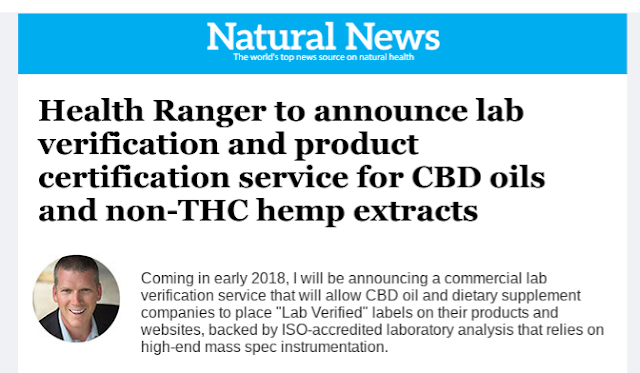_________________________
Who performs independent testing on your Hemp and Cannabis CBD and Hemp Oil products? Do you test for Pesticides, Heavy Metals, Fungicides, and other contaminants?
With the great phytoremediation and phytoextraction qualities of the Cannabis Plant see [ElectroHemp Bio Rad] it is better to be safe than sorry.
Peering into my crystal ball on the future of Cannabis for Human Consumption. Lack of testing could hurt the Cannabis Industry as a whole.
I would feel safer if more Canna business used an Independent Testing Services for the Cannabis products they sell. Scotty
Certifying CBD products to be authentic, clean and green
This new service, to be launched by CWC Labs, is designed to help consumers recognize safe, high quality hemp extract products that are independently verified by a third party laboratory to be authentic, clean and green. Product certification involves multiple tests on three different mass spec instruments, including ICP-MS and HPLC-MS-TOF.
As one of the pioneers in cannabis quantitation and validation, I am the co-author of a science paper published in the LC/GC science journal entitled, “Liquid Chromatography–Time-of-Flight Mass Spectrometry for Cannabinoid Profiling and Quantitation in Hemp Oil Extracts.” Since that science paper was published, my lab has developed even more precise mass spec analysis techniques that allow us to validate the following properties of CBD oil / hemp extracts:
- Accurate quantitation of CBD, CBDA, THC and other compounds typically found in hemp extracts.
- Molecular verification of accurate molecules, eliminating any possibility of counterfeit chemicals. (Using a combination of accurate mass, ion fragmentation, isotopic abundance, etc.)
- The absence of pesticides, herbicides, fungicides and other agricultural chemicals. (This is a huge issue, as many hemp products sold today are derived from cannabis plants that are heavily sprayed with toxic pesticides.)
- The absence of toxic solvents and extract chemicals that are frequently used in the industry even though they may pose a very real danger to consumers. Some hemp production companies, for example, are currently extracting hemp products using isopropyl alcohol (IPA), which is extremely toxic to the human body when ingested.
- The absence of toxic heavy metals, and the presence of nutritive minerals such as zinc and magnesium.
In other words, we are testing CBD products for not just CBDs, but also for pesticides, industrial chemicals and heavy metals as well.
Article Souce Natural News: https://www.naturalnews.com/2017-11-02-health-ranger-to-announce-lab-verification-service-for-cbd-oils-and-hemp-extracts.html












